If you spend long hours working on a computer and then the same again gaming all night, it's important to have the best possible ergonomics in your setup to prevent injuries and problems years down the line. One aspect that will make a big difference is the mouse you use, especially since gaming mice generally don't have ergonomics as a top priority. That's not the case with the Keychron M5.
Let me start by making this clear: the M5 isn't sold as a gaming mouse, despite some of its technical specifications. Keychron simply labels it as 'wireless ergonomic', but when you have features such as a 30,000 DPI sensor and an 8 kHz polling rate, it's clearly been designed to be suited for gaming and everyday use.
What makes the M5 more ergonomic than your average rodent is the fact that it's a vertical design—picture a normal mouse tilted onto its side, and you'll get the idea. Or just look at the pictures in this review!
The idea behind this layout is that it puts your wrist into a more natural resting position, and it's easier on your hand to squeeze your fingers inwards to activate the buttons, rather than raising them up to click them.
You can, of course, use the traditional motion to click on the buttons, but as with all vertical mice, tapping like this causes the mouse to be nudged slightly to one side. A gripping mouse pad or a lower DPI setting helps counter this, but a normal mouse won't budge when clicking its buttons.

Buttons: 5
Connectivity: USB Type-C (wired), 2.4 GHz wireless via included dongle, Bluetooth 5.3
Sensor: PAW 3950
Max DPI: 30K
Max acceleration: 50 G
Max speed: 750 IPS
Polling rate: Up to 8,000 Hz
Weight: 95 g / 3.4 oz
Battery life: Up to 140 hours (600 mAh)
RGB lighting: No
Price: $70/£74
Having used vertical mice on and off for many years, I can confirm that Keychron's design for the M5 works very well, as it's one of the most comfortable mice I have used for a very long time. So much so that using a traditionally designed mouse just feels quite painful after long use, in comparison.
Not that I was enamoured with the M5 to begin with. The main thing I didn't like was the choice of plastics for the mouse body—I'm entirely sure what Keychron has used, but it has a somewhat dry, rough feel, and it initially reminded me of how 3D-printed objects feel when first held.
That said, it felt better over time, and by the end of my testing period with the Keychron M5, I found that I preferred the feel to the glossy finish that most gaming mice have. I was also worried that the white plastics would attract grime and dirt, but that proved not to be the case.
The last vertical mouse I used was Logitech's Vertical MX, and I stopped using it because it was slow, unstable, and generally rather poor quality, especially when compared to Logitech's brilliant MX Master 3S.
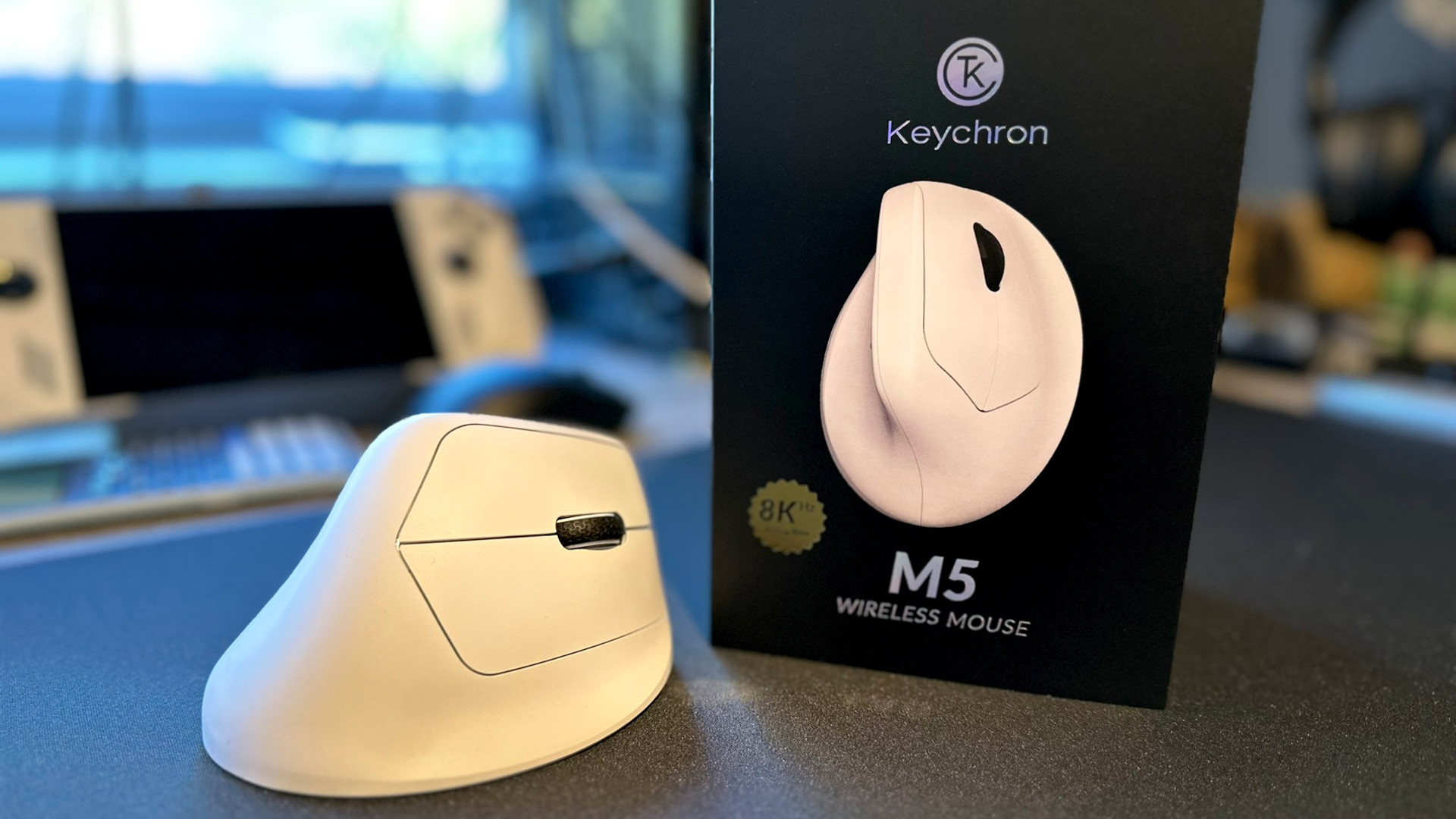
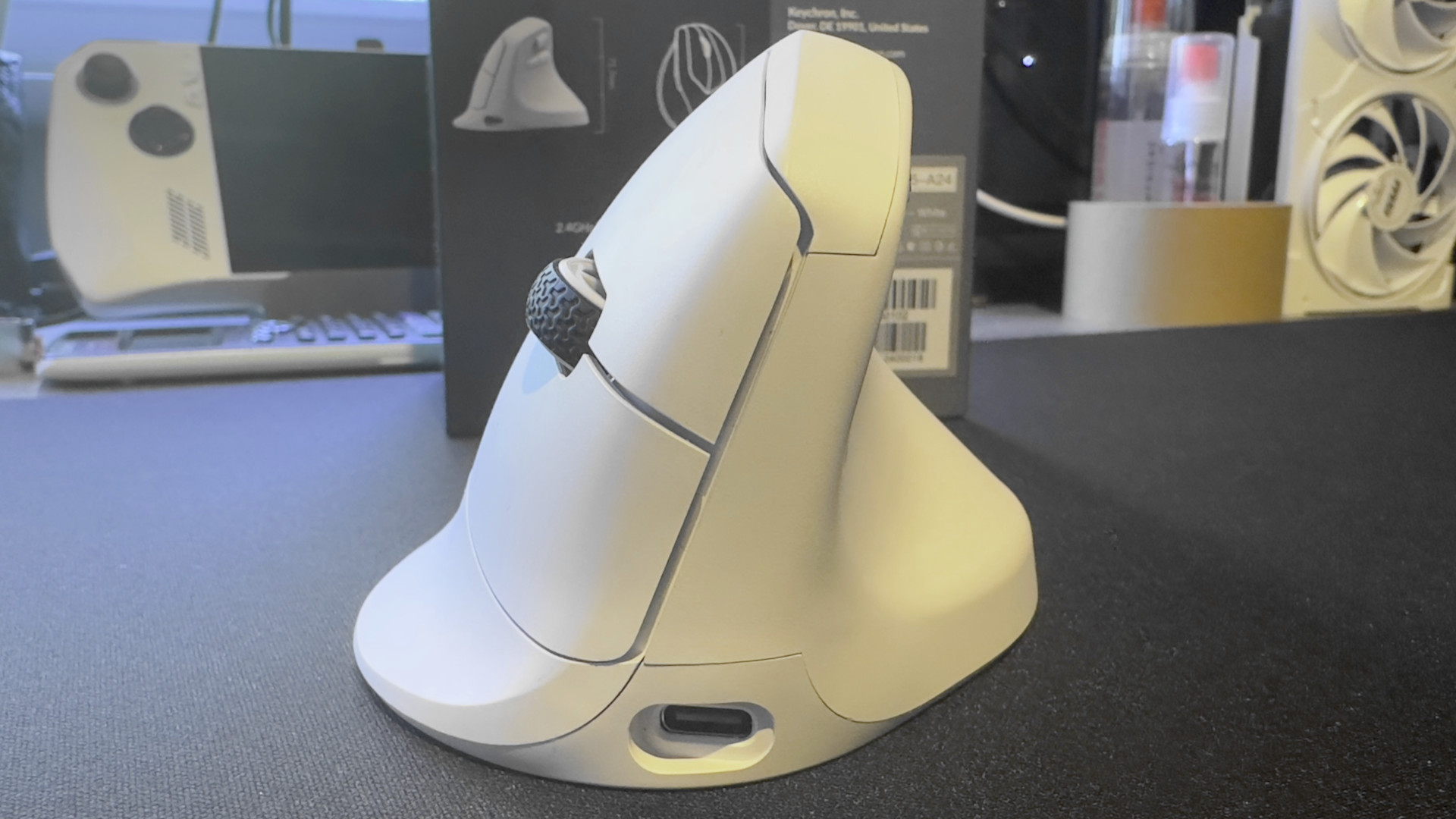
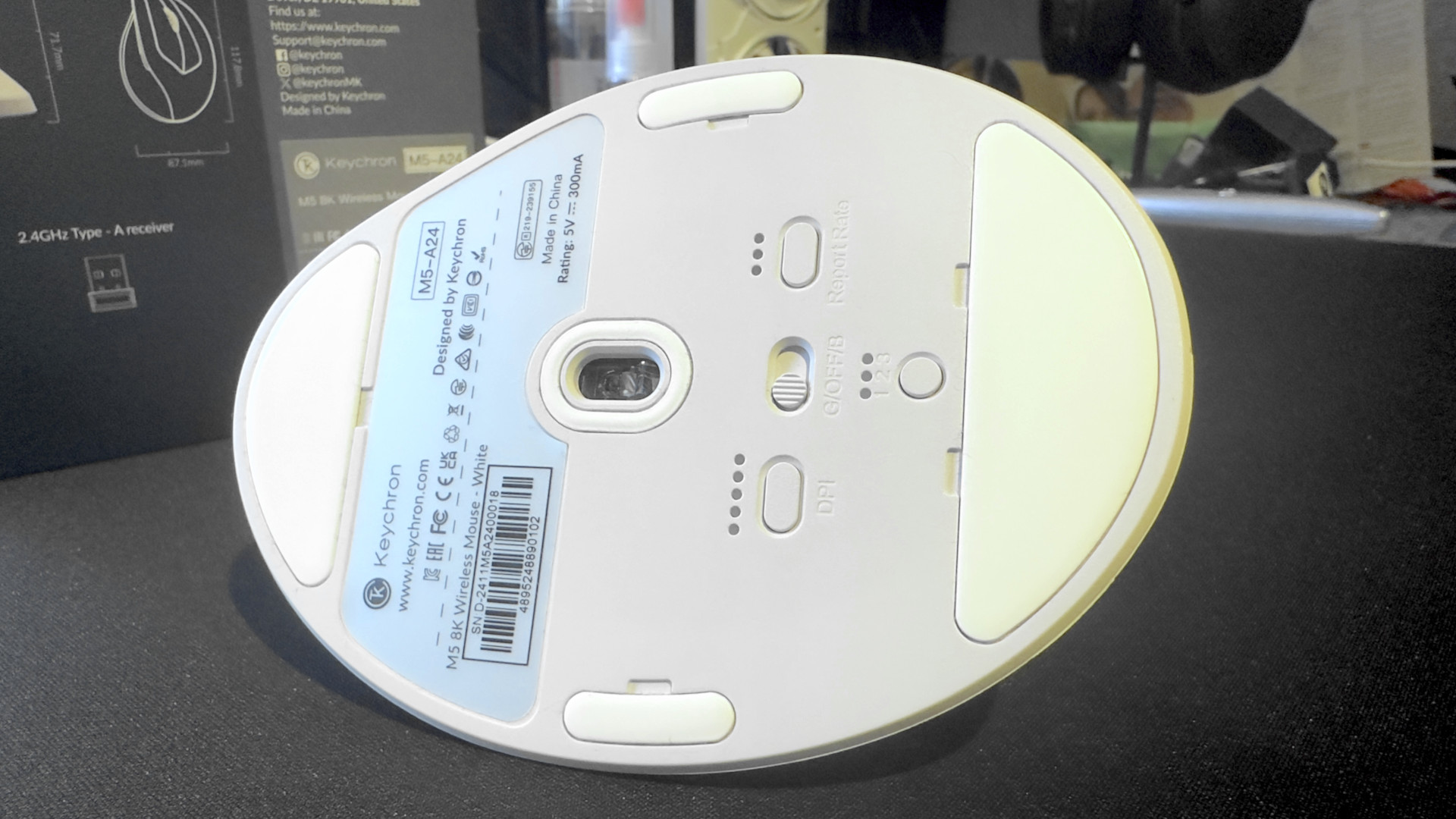
Keychron has produced a far superior vertical mouse to the MX—partly because it's vastly more stable but mostly because the sensor is faster and more accurate. It's actually a little too fast and accurate, and on a smooth surface, clicking the buttons nudges the mouse slightly out of position, making it quite hard to navigate applications with small icons.
The solution for me was to use a large neoprene mouse pad, along with a reduction in the DPI setting. The former stopped the mouse from moving too much (the PTFE sliders on its base are very slippery), and the latter helped me with fine control.
You can see just how good the M5's internals are in our mouse tracking test results below. The Mouse Tester benchmark records how well a mouse follows rapid movement—the consistency of the points in the charts proves that the M5 has no problem keeping up for the most part. It's not quite as good as a high-end, dedicated gaming mouse, but it's very good for a vertical, ergonomic mouse.







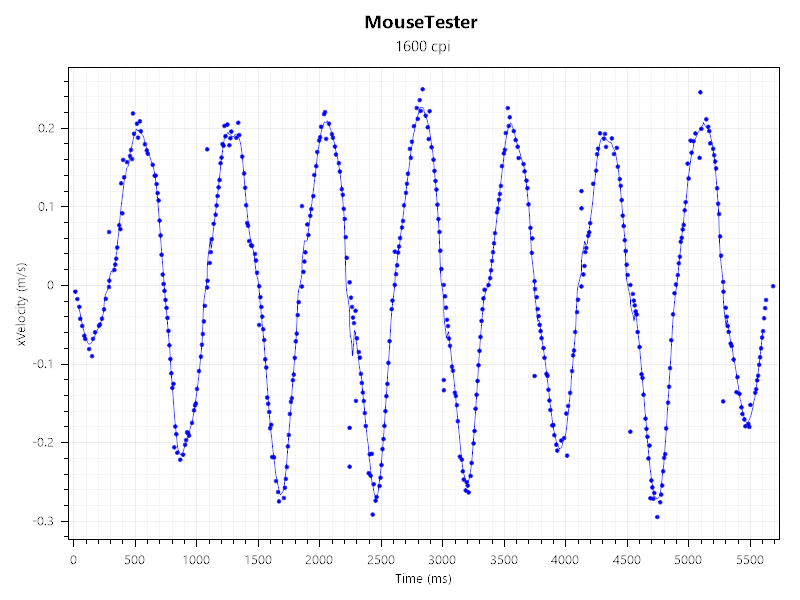

Some of the input latency times when using 8 kHz polling are a little on the high side, though that's more down to the PC being used for the testing than the mouse itself. But even so, it shows that you're better off avoiding 8K polling for something less demanding on your PC.
You might think that having a 30,000 DPI sensor and a polling rate of up to 8 kHz would make it an excellent mouse for gaming. In any other mouse format, this would be true, but vertical mice are just too unwieldy to be suitable for anything other than slow-paced games that require minimal mouse movement.
The Keychron M5 has a very wide base to ensure it's as stable as possible but that just makes it take up more space as it moves around, and while its 95 g weight isn't the heaviest you can get in the world of PC rodents, you're not going to be whipping the M5 around in a frantic round of Counter-Strike 2. It's fine in something like Hearts of Iron 4, or any strategy/turn-based game, and perhaps even a slow-paced RPG like The Witcher 3, but nothing that involves quick or wide movements.
So the M5's gaming credentials aren't great (though that's par for the course with vertical mice), but what about using it as a daily driver?
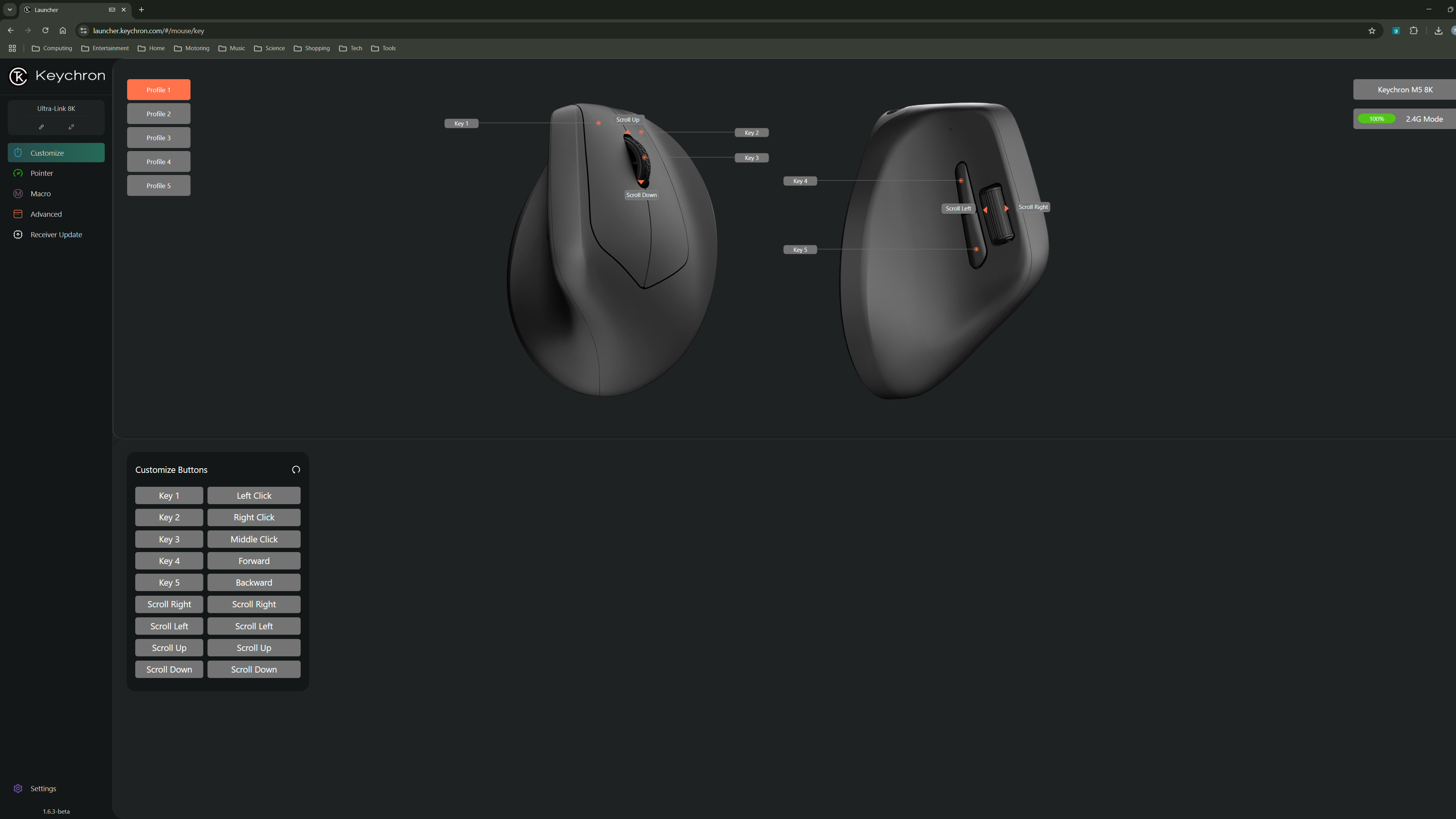
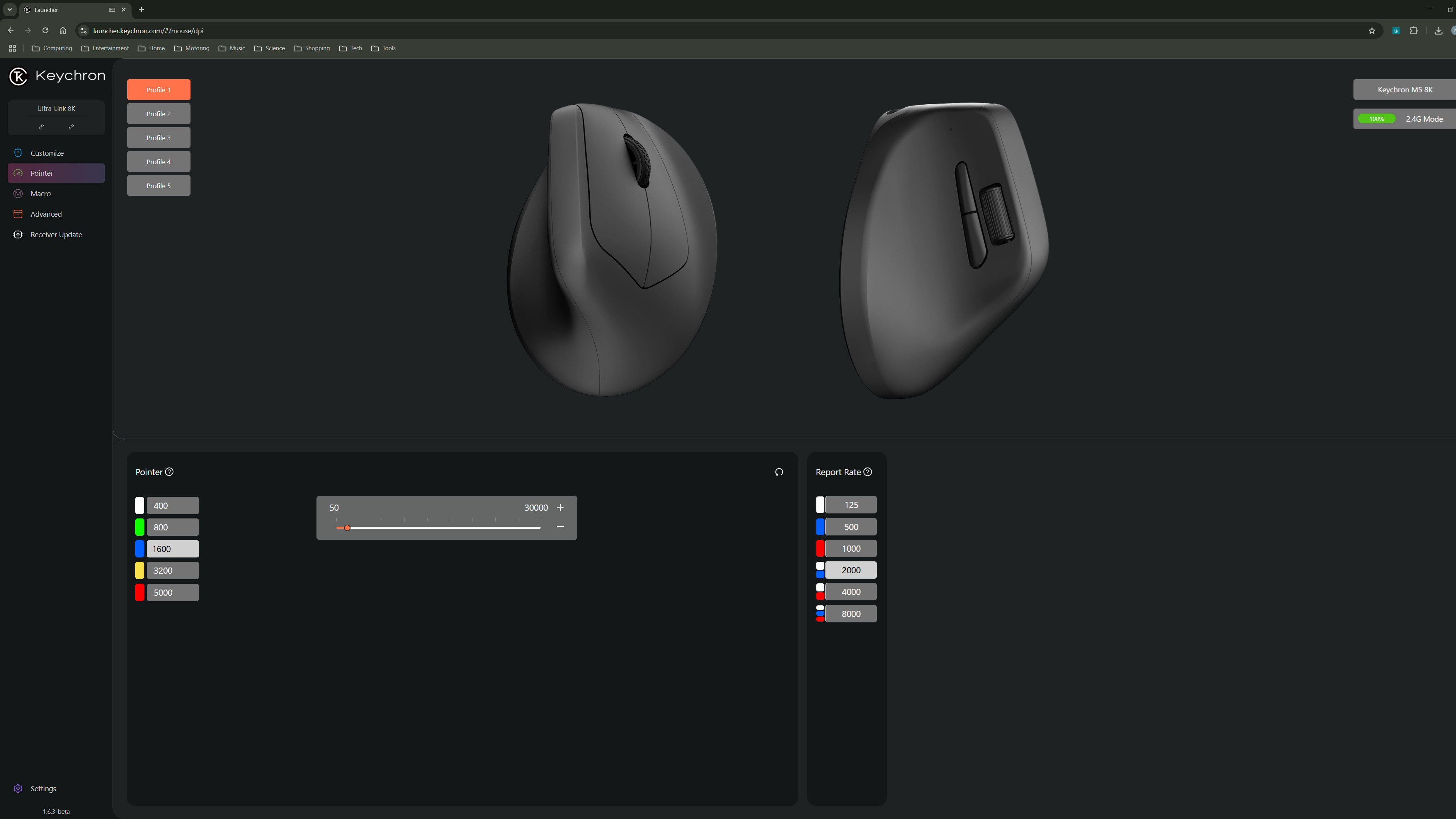
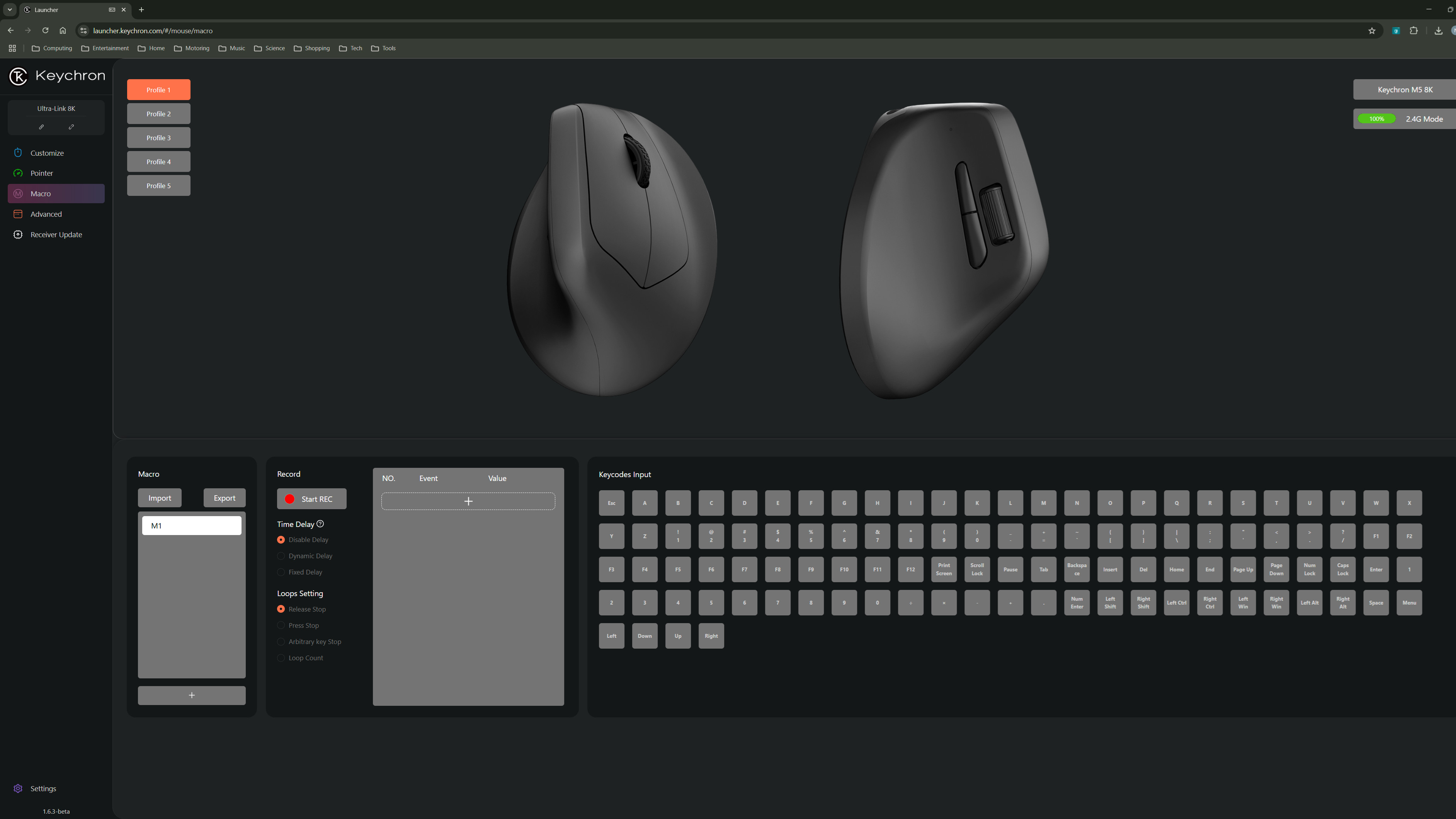
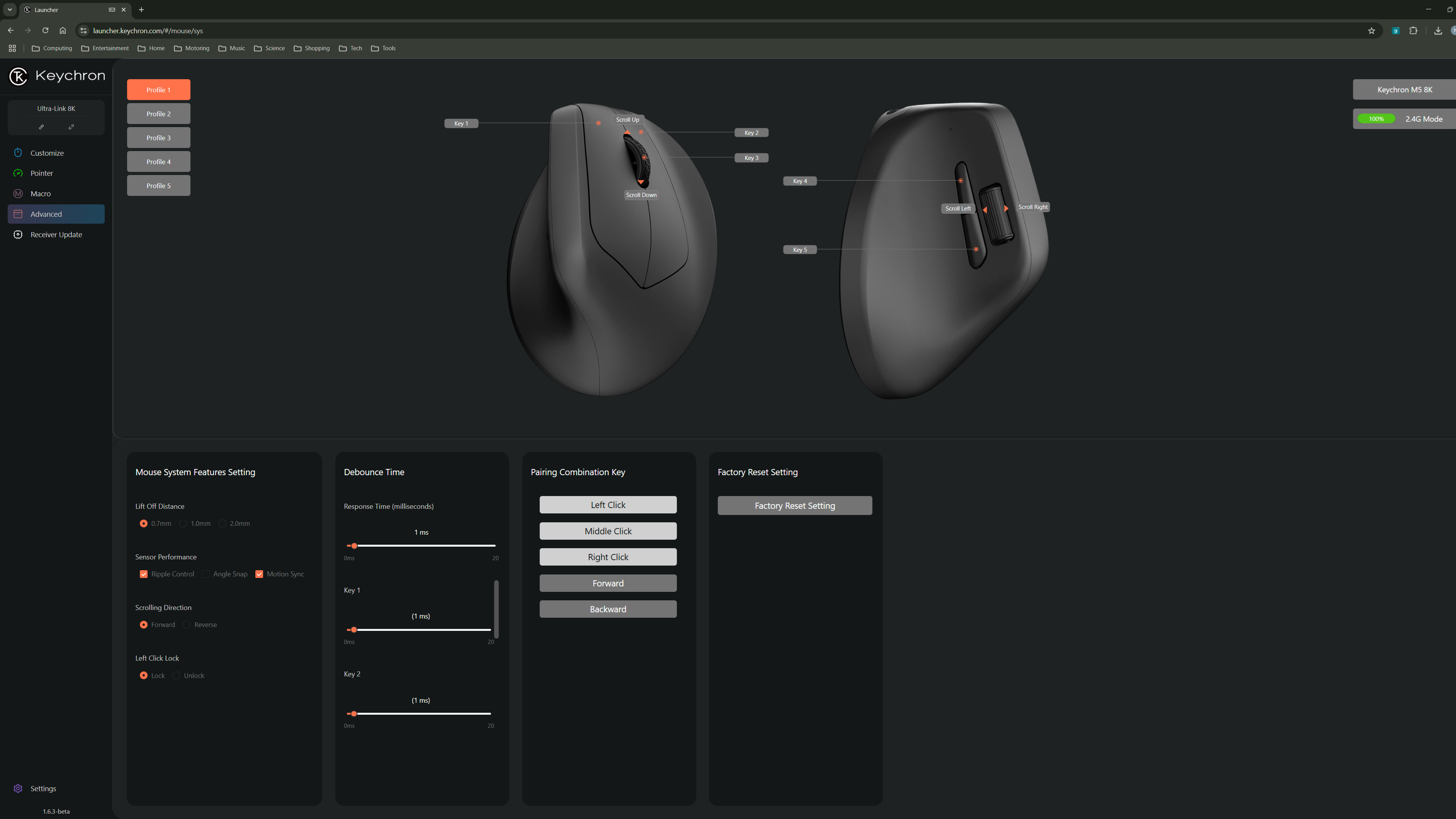
This is where the Keychron M5 really shines. The primary mouse buttons are lovely to use, with a positive action, and the web-based Keychron Launcher makes it a doddle to adjust the switches' lift-off distance and debounce times to suit your exact needs.
Using a webpage to change your mouse's settings might seem a little odd (for example, if Keychron's servers go down, you're stuck with the settings you've got until it's back up—though you can still change some settings directly on the mouse), but it allows the launcher to be updated or reconfigured without you having to keep track of software updates and downloading them.
You can reconfigure all five buttons and the two wheels to do anything, as well as set up macros and adjust the DPI and polling rate. Those last two can also be adjusted by small buttons in the mouse's base, and I applaud Keychron for adding useful LEDs to indicate what value they're currently set to.

✅ You want a stress-free life for your wrist: Vertical mice are supremely comfortable, once you've got used to the awkward shape, and your joints will thank you for using one.
✅ You don't want to spend a lot to go ergo: Keychron's price for the M5 is nothing short of remarkable, and given all the features, it'd still be great value for money if it were 50% more.
❌ You want a mouse for nothing but gaming: Vertical mice are only fine for slow-paced games, where you'll only ever move the mouse gradually and over small distances.
❌ You want an instantly accessible mouse: It takes quite a while to adapt to using a vertical mouse, and you'll feel inaccurate, slow, and clumsy for many weeks until you're used to it.
Add in the fact that the M5 can be paired with up to three different devices via Bluetooth (with a dedicated base button to switch between), as well as another computer that's using the 2.4 GHz dongle, and you've got an incredibly versatile rodent.
The cherry on the top of the M5's cake, though, has to be the price. At $70/£74, Keychron's ergonomic offering is considerably cheaper than the Logitech MX Vertical, which normally costs $120/£120 (though it's often on sale for less than that). The fact that the M5 is a much better vertical mouse and it's much cheaper makes it a no-brainer when it comes to picking a new ergonomic clicker.
Sure, the 8 kHz polling rate isn't really all that useful (it drains the battery quicker than when running at a slower rate), and the sensor is perhaps a little too fast and accurate with default settings, but these are minor gripes in the grand scheme of things.
Vertical mice aren't for everyone, and they're not a sensible choice for gaming, but if you are dead set on buying one, then just buy the Keychron M5. There's really nothing else to touch it in the ergonomic market right now.



